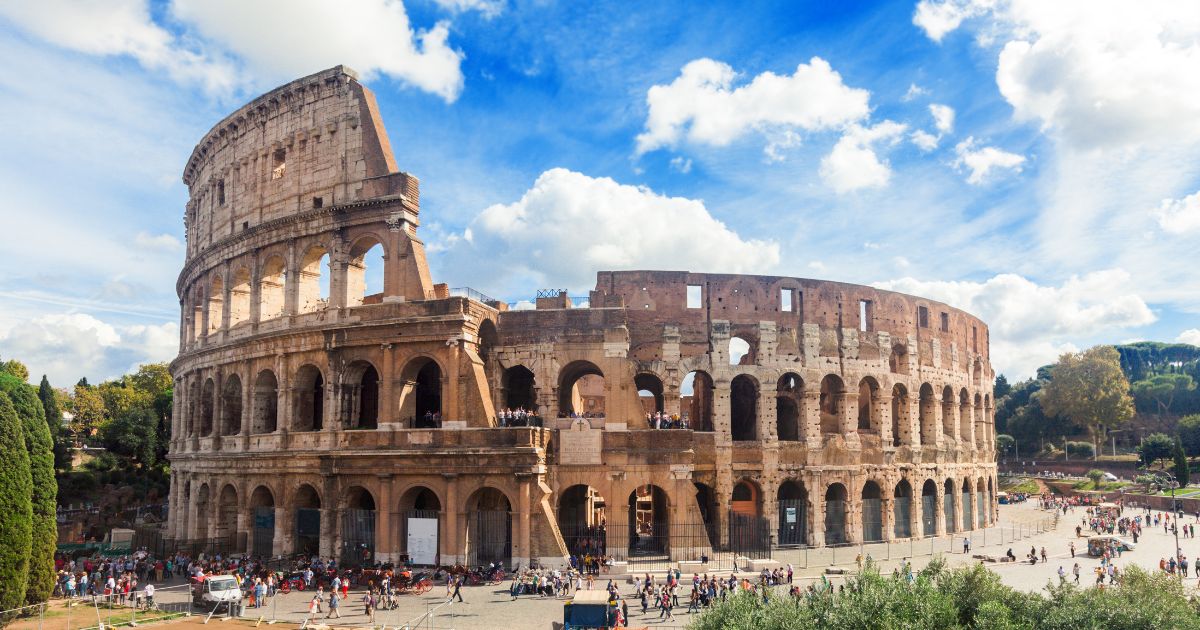Colosseum
The Colosseum, also known as the Flavian Amphitheatre, is an iconic symbol of ancient Rome. It was built in 70-80 AD and was used for gladiatorial contests and public spectacles, such as animal hunts and mock sea battles. Today, the Colosseum is one of the most visited tourist attractions in Rome, drawing millions of visitors each year.
In this article, we will provide a guide to visiting the Colosseum in Rome, including its history, architecture, and practical information for tourists.

Experience the wonders of Italy with our ultimate travel guide – visit our page on Italy travel and start planning your dream vacation today!
History of the Colosseum
The Colosseum was built during the reign of the Flavian dynasty, by Emperor Vespasian and his son Titus. It was constructed on the site of an artificial lake in the heart of Rome, and took approximately 10 years to build. The Colosseum was designed to hold up to 50,000 spectators, and was used for a variety of events, including gladiatorial contests, animal hunts, and public spectacles.
Over the centuries, the Colosseum fell into disrepair and was used as a quarry for building materials. However, in the 18th century, Pope Benedict XIV declared the Colosseum a sacred site, and efforts were made to preserve and restore the structure. Today, the Colosseum is a UNESCO World Heritage Site, and is one of the most recognizable landmarks in Rome.
Architecture of the Colosseum
The Colosseum is an impressive feat of engineering and design. The elliptical structure measures 188 meters long, 156 meters wide, and 50 meters high. The outer walls are made of travertine stone and are adorned with columns and arches. Inside, the seating area was divided into four levels, with the lower levels reserved for the wealthy and the upper levels for the poor.
One of the most impressive features of the Colosseum is its complex system of elevators and trap doors, which were used to transport animals and gladiators into the arena. The Colosseum also had a sophisticated system of tunnels and underground chambers, which were used to house the animals and gladiators before they entered the arena.
Visiting the Colosseum
Visiting the Colosseum is a must-do experience for anyone visiting Rome. The Colosseum is open to visitors year-round, although opening hours may vary depending on the season. Visitors can purchase tickets online in advance or at the ticket office on site.
Once inside the Colosseum, visitors can explore the various levels of seating and admire the impressive architecture of the structure. Audio guides are available in multiple languages, providing a wealth of information about the history and significance of the Colosseum.
Visitors can also take a guided tour of the Colosseum, which provides a more in-depth look at the history and architecture of the structure. Many tour companies also offer combined tours of the Colosseum and other nearby attractions, such as the Roman Forum and Palatine Hill.
Conclusion
In conclusion, the Colosseum is an iconic symbol of ancient Rome, and a must-visit destination for anyone traveling to the Eternal City. With its rich history, impressive architecture, and wealth of tourist attractions, the Colosseum is sure to leave a lasting impression on visitors of all ages
Suggested Article: 7 Must-See Stops On Your Day Trip From Rome to Tuscany
